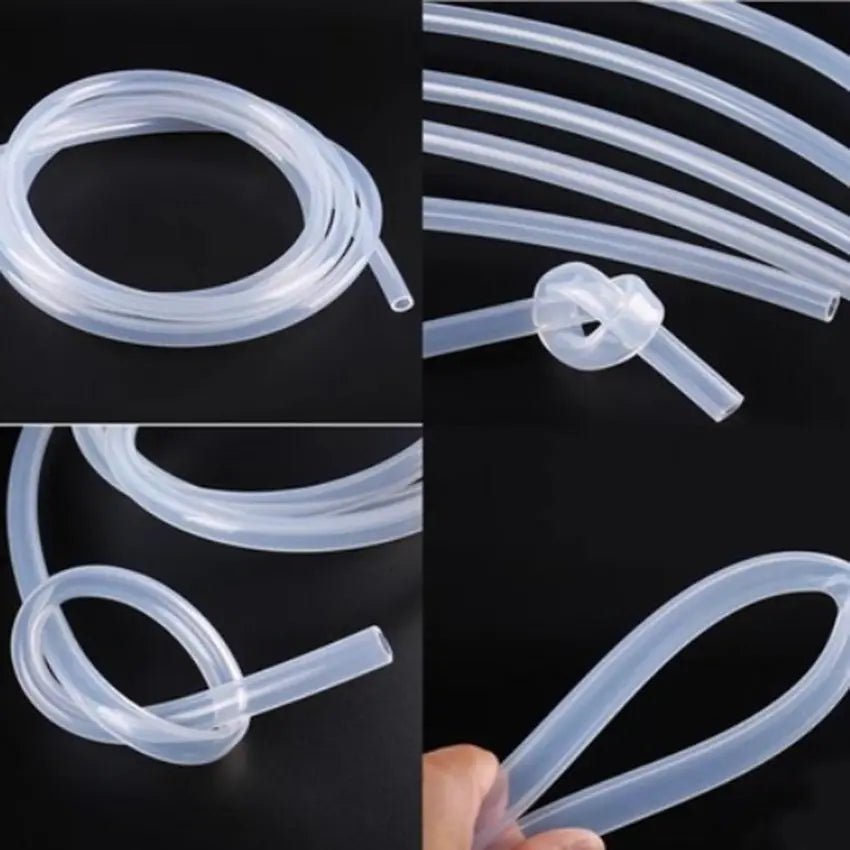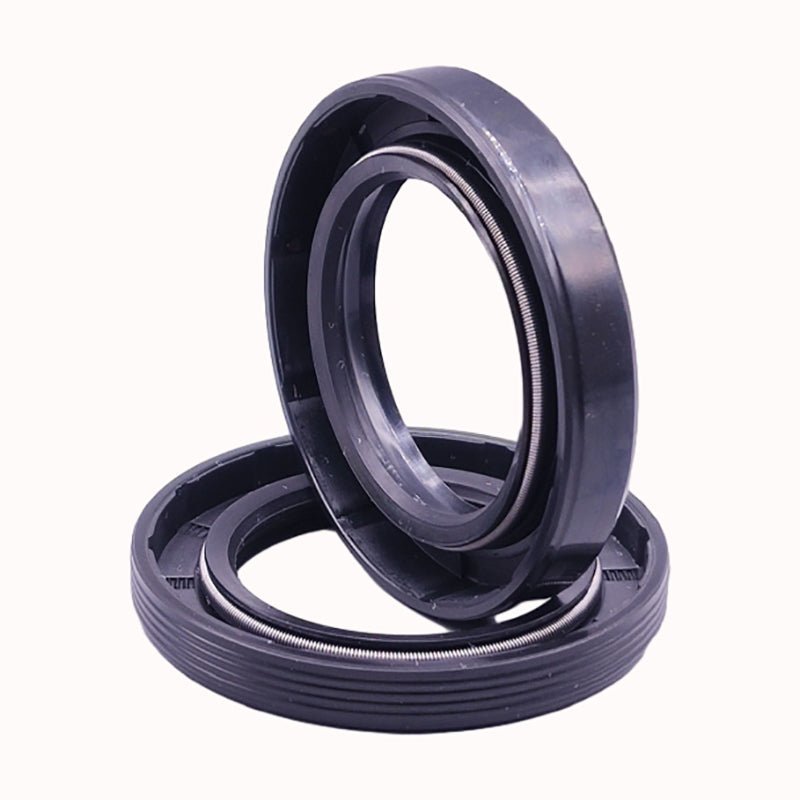Table of Contents:
-
Why Bother Cleaning Aquarium Tubing? (It's More Important Than You Think!)
-
Gathering Your Supplies: The Essential Cleaning Toolkit
-
Safety First: Protecting You and Your Aquatic Buddies
-
The Gentle Approach: Cleaning Without Disconnecting (For the Faint of Heart)
-
The Deep Clean Method: Taking Tubing Out for a Scrub (Most Effective!)
-
Step 1: Power Down & Disconnect
-
Step 2: The Initial Rinse – Blast Away the Big Stuff
-
Step 3: Choosing Your Cleaning Weapon: Pipe Cleaners, Brushes & More
-
Step 4: The Soaking Solution (Vinegar vs. Bleach – Pros & Cons)
-
Step 5: The Crucial Final Rinse – No Residue Left Behind!
-
Step 6: Reconnecting & Restarting Your System
-
-
Special Considerations: Different Tubing Types (Silicone vs. Vinyl)
-
When Cleaning Isn't Enough: Time to Replace Your Aquarium Tubing
-
Prevention is Key: Tips to Keep Tubing Cleaner Longer
-
Troubleshooting: Dealing with Stubborn Algae or Calcified Buildup
-
FAQs: Your Aquarium Tubing Cleaning Questions Answered!
-
Conclusion: Enjoy the Flow!
1. Why Bother Cleaning Aquarium Tubing? (It's More Important Than You Think!)
Out of sight, out of mind? Not when it comes to your aquarium tubing! That innocent-looking hose silently performing its duty is a prime target for gunk accumulation. Here’s why letting it get dirty is a bad idea:
-
Reduced Water Flow: The primary culprit! Algae, biofilm (that slimy coating), and mineral deposits (hard water, anyone?) build up on the inner walls, narrowing the passage. This forces your pump to work harder, potentially shortening its lifespan, and reduces vital filtration and oxygenation throughout your tank. Imagine trying to breathe through a pinched straw!
-
Water Quality Issues: Trapped debris and decaying organic matter inside the tubing can become a breeding ground for harmful bacteria and release unwanted substances back into your tank water, undermining your diligent water changes and filter maintenance.
-
Aesthetic Eyesore: While mostly hidden, discolored or obviously grimy tubing near the tank surface just looks bad. A clean setup is a prideful setup!
-
Potential for Clogs: In severe cases, buildup can completely block the tubing, causing equipment failure (like an overheated pump) or even flooding if a connection is forced.
-
Hidden Problems: Unlike your filter media or tank glass, tubing interiors are hard to inspect. Neglecting them means problems can develop unseen until they cause noticeable issues.
Regular cleaning ensures optimal system performance, protects your equipment investment, and contributes significantly to a healthier environment for your aquatic inhabitants. It’s preventative maintenance 101!
2. Gathering Your Supplies: The Essential Cleaning Toolkit
Don’t worry, you won’t need fancy equipment. Chances are, you have most of this around the house:
-
Bucket (Designated Fish-Only!): Crucially important. Use a bucket that has never held soaps, chemicals, or cleaners. You want this bucket reserved solely for aquarium tasks to avoid accidental contamination.
-
Hot Water: Straight from the tap is fine (for cleaning, not for the tank!).
-
Cleaning Brushes:
-
Flexible Aquarium Tubing Brushes: These are the gold standard. Look for long, flexible brushes with soft-to-medium bristles specifically designed for aquarium tubing diameter (e.g., 3/8", 1/2", 5/8"). They often come in kits. Find the perfect fit for your tubing size here: Explore our range of Aquarium Tubing Brushes.
-
Pipe Cleaners (Craft Type): The fuzzy, bendable kind. Good for smaller diameters or light buildup. Ensure they are new and unused.
-
Bottle Brushes: Can sometimes work for larger diameter tubing if you have one handy.
-
-
Cleaning Agents (Choose ONE for soaking):
-
White Distilled Vinegar: The safest, most natural option. Excellent for dissolving mineral deposits (limescale/calcium) and light algae. Biodegradable and non-toxic when rinsed thoroughly. (1 part vinegar to 1-2 parts water).
-
Unscented Household Bleach (Sodium Hypochlorite): Powerful against stubborn algae, bacteria, and biofilm. USE WITH EXTREME CAUTION. Requires exhaustive rinsing. (Dilution is key: 1 part bleach to 19 parts water - a 5% solution).
-
-
Optional but Helpful:
-
Towel or Rag: For drying and handling.
-
Old Toothbrush: For scrubbing connectors or external parts.
-
Funnel: Makes pouring solutions into tubing easier.
-
Safety Gloves: Especially recommended if using bleach.
-
Dechlorinator: An absolute necessity if you use bleach, for neutralizing any trace amounts during rinsing.
-
Turkey Baster or Syringe: For targeted flushing.
-
Pro Tip: Having dedicated aquarium tubing brushes in the correct size makes the job infinitely easier and more effective than trying to rig something up!
3. Safety First: Protecting You and Your Aquatic Buddies
-
NO SOAP, DETERGENT, or HOUSEHOLD CLEANERS! Ever. These leave residues that are extremely toxic to fish, even in tiny amounts. They can coat the tubing and leach out for weeks.
-
Bleach is a Last Resort: Only use it for severe, stubborn problems. If you choose bleach:
-
Wear gloves and work in a well-ventilated area.
-
Use the correct dilution (1:19 bleach: water).
-
Rinse, Rinse, RINSE! Then rinse some more. Soak in fresh water treated with a dechlorinator for at least 15-30 minutes. Perform the "sniff test" – there should be zero bleach odor.
-
-
Vinegar Rinsing: While much safer, vinegar residue can alter pH. Rinse the tubing thoroughly with clean tap water, then give it a final rinse with dechlorinated water before reconnecting.
-
Hot Water: Be careful not to scald yourself. Handle tubing carefully when using hot water.
-
Know Your Tubing: Some materials (like certain soft silicones) can be damaged by very hot water or aggressive scrubbing. When in doubt, gentler is better.
4. The Gentle Approach: Cleaning Without Disconnecting (For the Faint of Heart)
If the buildup seems light and you really don't want to disconnect everything (e.g., complex sump setups), you can try this. It's less effective than a deep clean but better than nothing.
-
Power Down: Turn off your pump/filter and any other equipment using the tubing. Unplug it!
-
Flush with Water: Disconnect the outlet end of the tubing (the end pouring water back into the tank) from its fitting. Hold it over your designated bucket.
-
Reverse Flush: Grab a clean pitcher or jug of tank-temperature water or dechlorinated tap water. Pour it forcefully backwards through the disconnected outlet end of the tubing. The goal is to push water against the normal flow direction, dislodging some debris out of the inlet end (which should now be submerged in your bucket). You might need a helper to hold the inlet end in the bucket. Repeat several times.
-
Use a Blast: A turkey baster or large syringe filled with water can be jammed into the outlet end to create a more forceful jet for flushing.
-
Reconnect & Restart: Reconnect the outlet end securely. Turn your system back on and observe the flow. This might improve things slightly for mild buildup.
Limitation: This method won't remove significant biofilm or hardened deposits clinging to the walls. For that, you need...
5. The Deep Clean Method: Taking Tubing Out for a Scrub (Most Effective!)
This is the best way to get your aquarium tubing truly clean. Plan for 30-60 minutes.
Step 1: Power Down & Disconnect
-
Turn off and unplug all relevant equipment (pump, filter, air pump, CO2 system).
-
Carefully disconnect the tubing from both ends (e.g., from the pump outlet and the filter inlet/spray bar/etc). Note or take a picture of the routing if it's complex! Pay attention to check valves if present.
Step 2: The Initial Rinse – Blast Away the Big Stuff
-
Take the disconnected tubing outside or hold one end over your designated bucket.
-
Run hot tap water through the tubing forcefully for a minute or two from each end. This dislodges loose debris, algae clumps, and detritus. Shake it vigorously while rinsing. You'll likely see some nasty stuff come out!
Step 3: Choosing Your Cleaning Weapon: Brushes are Best!
-
The Brush Method (Highly Recommended):
-
Select a flexible aquarium tubing brush that matches your tubing's inner diameter. Too small won't clean effectively; too large won't fit or could damage the tube.
-
Insert the brush into one end of the tubing. Gently push and rotate the brush as you feed it through the entire length. Pull it back out.
-
Rinse the brush under hot water to remove debris.
-
Repeat the process, inserting from the other end. Often, you'll dislodge more gunk going the opposite direction.
-
Continue brushing and rinsing until the brush comes out relatively clean and you see no major debris flushing out with water.
-
-
The Pipe Cleaner Method (For Smaller Tubes/Light Buildup): Twist and push a new, unused fuzzy pipe cleaner through the tubing. Use multiple if needed, as they get gunked up. Follow with vigorous rinsing.
Step 4: The Soaking Solution (Tackling Stubborn Gunk)
If brushing alone doesn't cut it, or you have hard water stains, it's soaking time. Choose EITHER Vinegar OR Bleach.
-
Vinegar Soak (Safer Choice):
-
Mix a solution of 1 part white distilled vinegar to 1 or 2 parts hot water in your bucket. Enough to submerge the tubing.
-
Coil the tubing loosely and submerge it completely. You can weigh it down with a clean rock or glass if it floats.
-
Let it soak for 1-2 hours. For heavy mineral deposits, you can soak overnight. The vinegar will dissolve the scale.
-
After soaking, remove the tubing and perform Step 5: The Final Rinse immediately.
-
-
Bleach Soak (Nuclear Option - Use Sparingly & Carefully):
-
WEAR GLOVES. Work in a ventilated area.
-
Mix a solution of 1 part unscented household bleach to 19 parts cool or lukewarm water (5% solution) in your bucket. NEVER use hot water with bleach!
-
Submerge the tubing completely. Soak for no more than 10-15 minutes. Bleach works fast, and prolonged exposure can degrade some tubing materials.
-
After 15 minutes max, remove the tubing. DO NOT SKIP THE NEXT STEPS.
-
Step 5: The Crucial Final Rinse – No Residue Left Behind!
This step is PARAMOUNT, especially after bleach.
-
Initial Rinse: Immediately after removing the tubing from any soak (vinegar or bleach), rinse it thoroughly under running tap water for several minutes. Flush water through it from both ends.
-
Extended Rinse (Essential for Bleach):
-
Fill your clean bucket with fresh tap water.
-
Add a double or triple dose of your aquarium water dechlorinator (e.g., Seachem Prime, API Stress Coat) to the bucket. This neutralizes chlorine/chloramine.
-
Submerge the tubing completely in the dechlorinated water solution.
-
Let it soak for at least 30 minutes, preferably longer (1-2 hours is better).
-
-
Final Flush: After the dechlorinator soak, rinse the tubing again thoroughly under running tap water for a few more minutes. Flush it well.
-
The Sniff Test (Critical for Bleach): Hold the tubing up to your nose. Do you smell any bleach or chemical odor? If you smell ANYTHING, repeat the dechlorinator soak and rinsing process until there is absolutely ZERO smell. Vinegar smell is less critical but should also fade significantly with rinsing.
Step 6: Reconnecting & Restarting Your System
-
Visually inspect the tubing. It should look clean inside and out (hold it up to a light).
-
Reconnect the tubing to your equipment, following your earlier notes/picture if needed. Ensure all connections are snug to prevent leaks, but don't overtighten.
-
Before plugging anything back in: Double-check that all equipment is reconnected correctly. Ensure the tubing isn't kinked.
-
Plug in and restart your pump/filter.
-
Observe Carefully: Watch for leaks at the connections. Listen for unusual noises from the pump (airlocks can sometimes happen – gently shaking the tubing can help). Check the water flow rate – it should be noticeably improved!
-
Monitor your tank over the next few hours for any signs of stress in fish or invertebrates (though unlikely if you rinsed thoroughly).
6. Special Considerations: Different Tubing Types (Silicone vs. Vinyl)
Most aquarium tubing falls into two main categories:
-
Standard Vinyl Tubing: The most common and affordable type. Generally clear or blue. Pros: Flexible, readily available, cheap. Cons: Can kink easily, may become cloudy or stiff over time, can leach plasticizers (less common now). Cleaning: Handles vinegar soaks well. Can handle brief bleach soaks if absolutely necessary, but be cautious as it can become brittle over time with harsh chemicals. Use warm (not boiling) water. Brush gently.
-
Silicone Tubing: More premium. Very soft, flexible, highly kink-resistant. Often stays clearer longer. Pros: Extremely flexible, less prone to kinking, generally more chemically inert, tolerates higher temperatures. Cons: More expensive, can sometimes be too soft for some applications, can develop tiny surface scratches. Cleaning: Avoid bleach if possible, as it can potentially degrade silicone over repeated use (though short soaks at proper dilution are generally tolerated). Vinegar is safe. Avoid very hot water (stick to warm). Be extra gentle with brushes as silicone can nick easily – soft bristles only! Silicone is generally more durable long term.
Check the specifications of the tubing you purchased if unsure. When replacing tubing, consider the benefits of silicone for its flexibility and longevity. Browse our selection of durable and flexible tubing options: Vinyl & Silicone Aquarium Tubing.
7. When Cleaning Isn't Enough: Time to Replace Your Aquarium Tubing
Even with the best care, tubing doesn't last forever. Signs it's time for a fresh length:
-
Cloudiness/Opaqueness: If the tubing looks permanently foggy or yellowed, even after cleaning.
-
Stiffness & Brittleness: If it's lost flexibility, cracks easily, or feels hard.
-
Deep Staining: Internal staining that won't brush or soak out.
-
Persistent Odor: If it retains a smell (plastic, old algae) after thorough cleaning.
-
Kinking: If it kinks excessively, and restricts flow easily.
-
Visible Damage: Cracks, splits, or deep scratches.
-
Recurring Flow Problems: If you clean it, and the flow doesn't improve significantly.
Pre-cut vs. Bulk: Buying bulk aquarium tubing is cost-effective. Keep extra on hand! Measure twice, cut once when replacing. Stock up on fresh, high-quality tubing: Shop Aquarium Tubing.
8. Prevention is Key: Tips to Keep Tubing Cleaner Longer
-
Control Algae at the Source: Manage light duration and intensity, maintain good nutrient balance (don't overfeed!), ensure adequate water flow/circulation in the tank, and perform regular water changes. Less algae in the tank = less algae growing in the tubes!
-
Positioning: Keep tubing out of direct sunlight if possible, as this encourages algae growth.
-
Regular Visual Checks: Peek inside the ends of your tubing every couple of weeks during maintenance. Catch buildup early!
-
Schedule Deep Cleans: Make tubing cleaning part of your regular maintenance routine. How often? Depends on your tank:
-
Heavy Stocking/Feeding: Every 3-4 months.
-
Average Community Tank: Every 6 months.
-
Lightly Stocked/Heavily Planted: Maybe once a year.
-
Hard Water Tanks: More frequently due to mineral buildup (e.g., every 2-3 months).
-
-
Consider Tubing Material: Silicone tubing tends to resist algae adhesion slightly better than standard vinyl.
9. Troubleshooting: Dealing with Stubborn Algae or Calcified Buildup
-
Stubborn Green Algae: If brushing and vinegar didn't work, a short (10-15 min) bleach soak at the correct dilution (1:19) is usually effective, followed by extremely thorough dechlorination rinsing. Ensure it's green algae and not cyanobacteria (slime), which might need different treatment in the tank itself.
-
Hard White/Crusty Buildup (Limescale/Calcium): Vinegar is your best friend here. Soak longer (overnight if necessary). You can also try gently "kneading" the tubing while it soaks to help break up the deposits. Avoid mechanical scraping inside the tube.
-
Brown Diatom Algae: Usually brushes out relatively easily. Vinegar soak can help if persistent. Address the root cause (often new tank syndrome or silicates in water).
-
Biofilm (Clear/Brown Slime): Brushing is crucial. A vinegar soak can help break it down. Bleach is very effective but requires caution. Ensure good tank hygiene and flow.
10. FAQs: Your Aquarium Tubing Cleaning Questions Answered!
-
Q: Can I use a dishwasher to clean my aquarium tubing?
-
A: NO! Dishwashers use detergents and high heat that can leave toxic residues and damage the tubing.
-
-
Q: Can I boil my aquarium tubing to sterilize it?
-
A: Not recommended for most types. High heat can melt or deform standard vinyl tubing and may weaken silicone over time. Hot water rinses and proper cleaning solutions are safer and effective.
-
-
Q: How do I clean very long aquarium tubing?
-
A: Use an appropriately long, flexible brush. If you don't have one long enough, focus on cleaning sections at a time by feeding the brush as far as it goes from both ends. For soaking, coil it carefully in a large bucket or storage tub. Consider replacing overly long runs if possible.
-
-
Q: Can I use hydrogen peroxide to clean tubing?
-
A: While hydrogen peroxide (H2O2) breaks down into water and oxygen and is sometimes used in tanks at low doses, it's generally not the best choice for tubing cleaning. It's less effective than vinegar on minerals or bleach on algae/biofilm at safe concentrations, and it can be tricky to ensure complete neutralization/breakdown before reintroducing to the tank. Stick with vinegar or (cautiously) bleach.
-
-
Q: Should I clean the tubing connected to my air pump?
-
A: Yes! Airline tubing can also develop internal gunk and even mold, especially if it's humid. Use the same gentle methods (brushing, vinegar soak). Disconnect from the pump and air stone/device first. Ensure it's completely dry inside before reconnecting to prevent moisture from reaching the pump.
-
-
Q: What about tubing inside canister filters or other enclosed filters?
-
A: The intake and output tubing outside the filter should be cleaned as described. Internal hoses within the filter unit itself should be cleaned according to the manufacturer's instructions during your regular canister maintenance. Often, they can be rinsed with tank water or dechlorinated tap water; avoid strong chemicals inside the filter where the media resides.
-
11. Conclusion: Enjoy the Flow!
Cleaning your aquarium tubing might not be the most glamorous chore, but it's a vital one for a healthy, thriving aquarium. Armed with the right tools (especially those handy brushes!), a safe approach, and this step-by-step guide, you can tackle this task with confidence. Remember, prevention through good tank maintenance is ideal, but when that green tinge or reduced flow appears, you know exactly what to do.
The reward? Seeing that strong, crystal-clear current flowing through your tank again, knowing your filtration is working optimally, and your fish are enjoying the best possible water quality. Plus, clean tubes just make the whole setup look more professional! So grab your bucket, choose your weapon (vinegar for the win!), and give your aquarium tubing the TLC it deserves. Your underwater ecosystem will thank you for it.
Need supplies? We've got your back! Find everything from tubing brushes to replacement vinyl and silicone tubing in all standard sizes:
Explore Our Aquarium Tubing & Cleaning Essentials
Got a killer tubing cleaning tip or a horror story? Share it in the comments below – let's learn from each other! Happy Fishkeeping!








